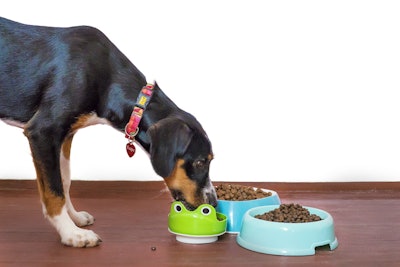
In the changing world of pet food, just having a nice logo isn't enough anymore. People want brands that match their beliefs and understand them, especially in the busy Latin American market with so many brands to choose from.
This change means we need to rethink how we create brands. Everything from making new products to being socially responsible needs to fit together to make a brand that really connects with people.
TripleThree International conducted an analysis of 505 pet food brands in Latin America. This analysis shed light on how each region's cultural preferences and market trends shape the names of these brands. TripleThree’s aim was to decode the key messages behind the brand names found on the shelves of pet owners' homes.
What do pet food brands in Latam communicate?
Brazil stands out with names like "Biofresh" and "Naturalis," reflecting a growing preference for natural ingredients and promoting healthy living for pets. In contrast, Mexico and Argentina prefer internationally recognized brands such as "Proplan" and "Royal Canin," known for their quality and trustworthiness in the global market. Notably, Mexico also boasts names like "Natural Gourmet," highlighting a focus on specialized pet care and dietary sophistication.
Colombia's diverse array of brand names, including "Nutriss" and "Defense," indicates a market that values both nutritional richness and protective health benefits. Similarly, Chile appeals to pet owners with names like "Master Dog" and "Fit," which suggest robust health and vitality. Many of these names incorporate English terms, symbolizing modernity, and global standards.
Peru showcases a blend of international prestige and local charm in brand names like "Ricocan." Meanwhile, Ecuador continues the health-conscious trend with names such as "Nutrapro" and "Wellness," reflecting a continent-wide shift toward overall pet welfare.
Although Spain is not part of Latin America, TripleThree included it in its analysis due to its cultural connections. The contrast between innovative names like "Advance" and "Brekkies" and "white brands" in Spain's market indicates an appreciation for both cutting-edge and budget-friendly options in pet nutrition.
TripleThree research shows that pet food brands in Latin America aim to connect with pet owners emotionally and promote pet health. These results show a mix of ideas from around the world and feelings from local communities, all focusing on keeping pets healthy and happy.
How sophisticated are brand names in Latam?
Let's assume that sophisticated names include those with multiple words, foreign language elements, or evocative descriptors, while less appealing names consist of single, common words or straightforward descriptions.
Sophisticated names included 287 brands, while less appealing names included 218 brands.
This breakdown provides insight into the diversity of naming conventions across the pet food brands in Latin America, highlighting the prevalence of both sophisticated and simpler names in the market.
Upon reflection, it seems that many brands strategically segment their market by tailoring their names to appeal to specific consumer demographics or preferences. It’s also likely, however, that some brands rely on intuition or emotional appeal in naming their products, aiming to evoke positive associations or sentiments among pet owners.
This blend of strategic segmentation and emotional resonance underscores the complexity of brand naming in the pet food industry, where companies must balance practical considerations with the desire to create a meaningful connection with their target audience.
How to build a successful pet food brand
Building a successful pet food brand relies on making real connections with pet owners. It is about more than just the product, it is about understanding their values, needs and desires. This complete approach, from finding a brand's purpose to using effective communication and loyalty plans, helps create lasting connections. Big global brands do this effectively, connecting with pet owners through these methods.
- Technological innovation is crucial in a market that is saturating quickly. Developing novel products that anticipate trends and meet pet owners' expectations is crucial for maintaining brand relevance. This includes everything from specialized or enhanced formulas to sustainable practices and leveraging technology as a marketing claim to build trust and enrich the product experience. Currently, successful brands implicitly and explicitly “sell” technology, particularly in premium food segments.
- Digitalization is essential in today's data-driven era, redefining our interactions. For pet food brands, using digital technology is a great way to make and keep connections with pet owners. By personalizing the shopping experience and customer service with digital tools, we can really change how people see our brand.
- Sustainability and social responsibility are things customers now expect especially younger consumers. Brands that show they're truly committed to these values by being honest and transparent can win pet owners' respect and loyalty. This is because they connect with people's personal beliefs. Some top brands show social responsibility by helping communities with abandoned dogs and giving food to shelter networks.
- Data measurement and analysis helps the pet food producer fine-tune brand strategies accurately. This analytical approach ensures we meet and exceed market expectations, raising the standard for what it means to be a pet food brand.
Building a brand in the pet food world is about creating a meaningful experience and a lasting relationship with pet owners. By holistically addressing innovation, technology, sustainability and data analysis, brands can remain relevant and competitive over time in saturated environments.
Brand architecture is the framework upon which a company's identity is built, ensuring coherence and clarity in its market offering. This way of thinking is key for standing out in competitive markets. It helps brands grow and change in a smart way, thinking about the future.


















